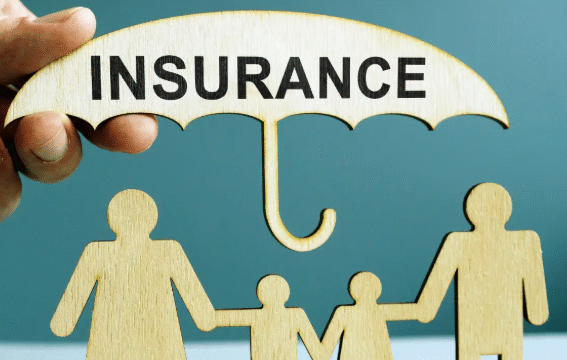Insurance has been around for thousands of years, quietly shaping the way people protect themselves, their families, and their livelihoods. Today, it’s almost second nature to think about health insurance, auto insurance, or life insurance as part of everyday financial planning. But how did this system of protection begin, and how has it changed over time? The journey of insurance reflects human history itself—full of growth, adaptation, and innovation. In this article, we’ll explore the fascinating story of insurance, from its earliest beginnings in ancient societies to the highly digital systems we see today. Along the way, we’ll look at how insurance has influenced communities, supported economies, and adapted to the needs of changing generations.
Early Roots of Insurance: Ancient Civilizations
The concept of insurance is older than many realize. It did not start with modern companies or legal contracts, but with simple community practices designed to reduce risk. Around 1750 BCE, the Code of Hammurabi in Babylon included rules for merchants. If a trader took out a loan to finance a shipment, lenders would cancel the debt if the goods were lost at sea. In return, the borrower paid a little extra at the start—an early form of a premium. In ancient China, merchants divided their cargo across several boats. If one boat sank, the loss was shared rather than destroying a single merchant’s wealth. This was risk-sharing in its most basic form. In Greece and Rome, guilds and burial societies pooled money to cover funeral costs or support families of deceased members. These were early versions of life insurance. These examples show that insurance was always about people coming together to soften the impact of unpredictable events.

The Middle Ages: From Guilds to Maritime Insurance
As societies grew, so did the need for more structured systems of protection. During the Middle Ages in Europe, trade guilds provided security for members. If a craftsman’s workshop burned down, the guild helped rebuild it. If someone was injured, guild funds supported their family. At the same time, maritime insurance rose in importance. Trade by sea was risky, and merchants needed protection. By the 14th century, Italian merchants developed written contracts to cover ships and cargo against storms or pirates. This practice spread across Europe, laying the foundation for modern insurance contracts. In 17th-century London, merchants gathered at Lloyd’s Coffee House to discuss shipping risks. Eventually, Lloyd’s of London became the world’s most famous insurance marketplace. Insurance was no longer just about small community support—it was becoming a professionalized industry.
The Birth of Modern Insurance
The 17th and 18th centuries marked a turning point. After the Great Fire of London in 1666 destroyed thousands of homes, the need for fire insurance became obvious. Nicholas Barbon founded the first fire insurance company, and soon insurers were marking protected buildings with special signs. Life insurance also grew in importance during the 18th century, especially in Britain and America, as societies began offering policies to protect families from financial hardship. Meanwhile, the Industrial Revolution multiplied risks. Factories, railroads, and cities introduced new dangers, so insurance companies adapted by covering workplace injuries, accidents, and property. Insurance had moved from small groups to large institutions serving businesses, governments, and individuals.
Insurance in the 19th and 20th Centuries
By the 19th century, insurance was firmly established as part of everyday life. Health insurance gained traction in Germany when Chancellor Otto von Bismarck introduced state health insurance in the 1880s, setting an example for other nations. This idea of structured health protection later spread worldwide. With the rise of cars in the early 20th century, automobile insurance became necessary. By the 1920s and 30s, many regions required drivers to carry coverage. War and disaster coverage also became essential. The world wars, economic crises, and natural disasters highlighted the importance of insurance for rebuilding communities. Governments and insurers worked together to stabilize economies after major losses. Life insurance, too, expanded rapidly. By the mid-20th century, life insurance policies became standard for families, offering financial security across generations. Insurance was no longer a luxury; it had become a social expectation.

Technology Transforms Insurance
The late 20th century brought sweeping technological changes that reshaped insurance. Computers in the 1960s and 70s allowed insurers to store and analyze customer data, speeding up claims and underwriting. By the 1990s, the internet allowed people to research and purchase policies online, increasing competition and transparency. Digital claims processing simplified paperwork, allowing customers to upload documents and receive faster payouts. Technology not only made insurance more efficient but also more accessible.
Modern Trends in Insurance
Today, insurance is a highly developed global industry, offering coverage for nearly every aspect of life. Health insurers increasingly integrate wellness programs, rewarding policyholders for healthy habits. In developing regions, microinsurance provides small, affordable policies that protect farmers, workers, and families from basic risks. With rising natural disasters, insurers are creating products that protect against floods, hurricanes, and wildfires. Digital platforms, mobile apps, and online portals now make it easier than ever for customers to compare policies, track claims, and manage accounts. Insurance has never been more personalized and widespread than it is today.

The Human Side of Insurance
At its heart, insurance is about people. Behind every policy is a story of protection: a family able to rebuild after a fire, a driver supported after an accident, a patient receiving care thanks to health coverage, a small business owner recovering from unexpected loss. Insurance provides peace of mind, ensuring that individuals and communities can bounce back from challenges.
The Future of Insurance
Looking ahead, insurance will continue to evolve. Experts see growth in smarter use of digital tools, new products for modern lifestyles, greater focus on global risks like climate change, and more flexible and customer-friendly policies. The industry’s history shows its adaptability. As long as life carries uncertainty, people will find ways to share risks and protect one another.



